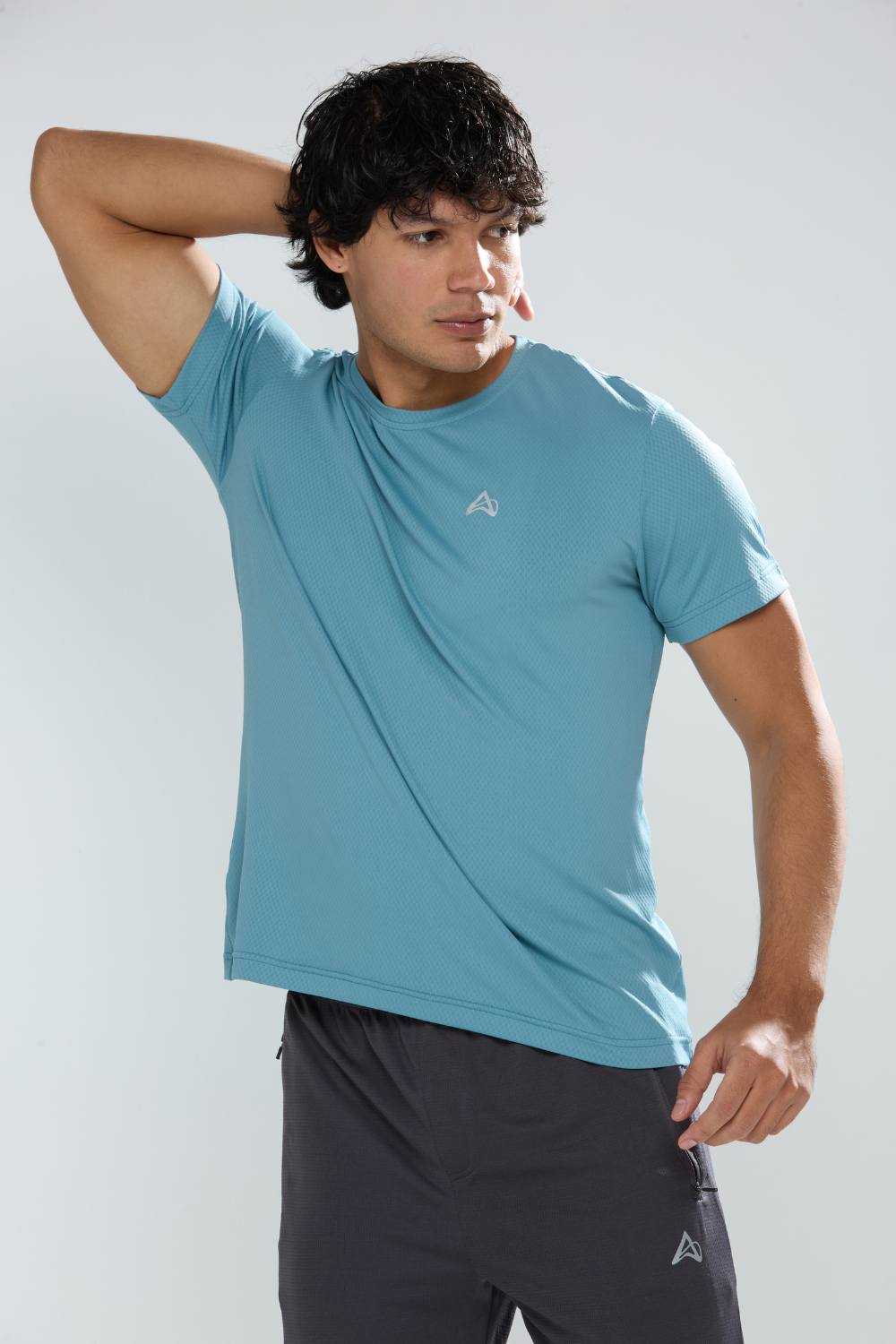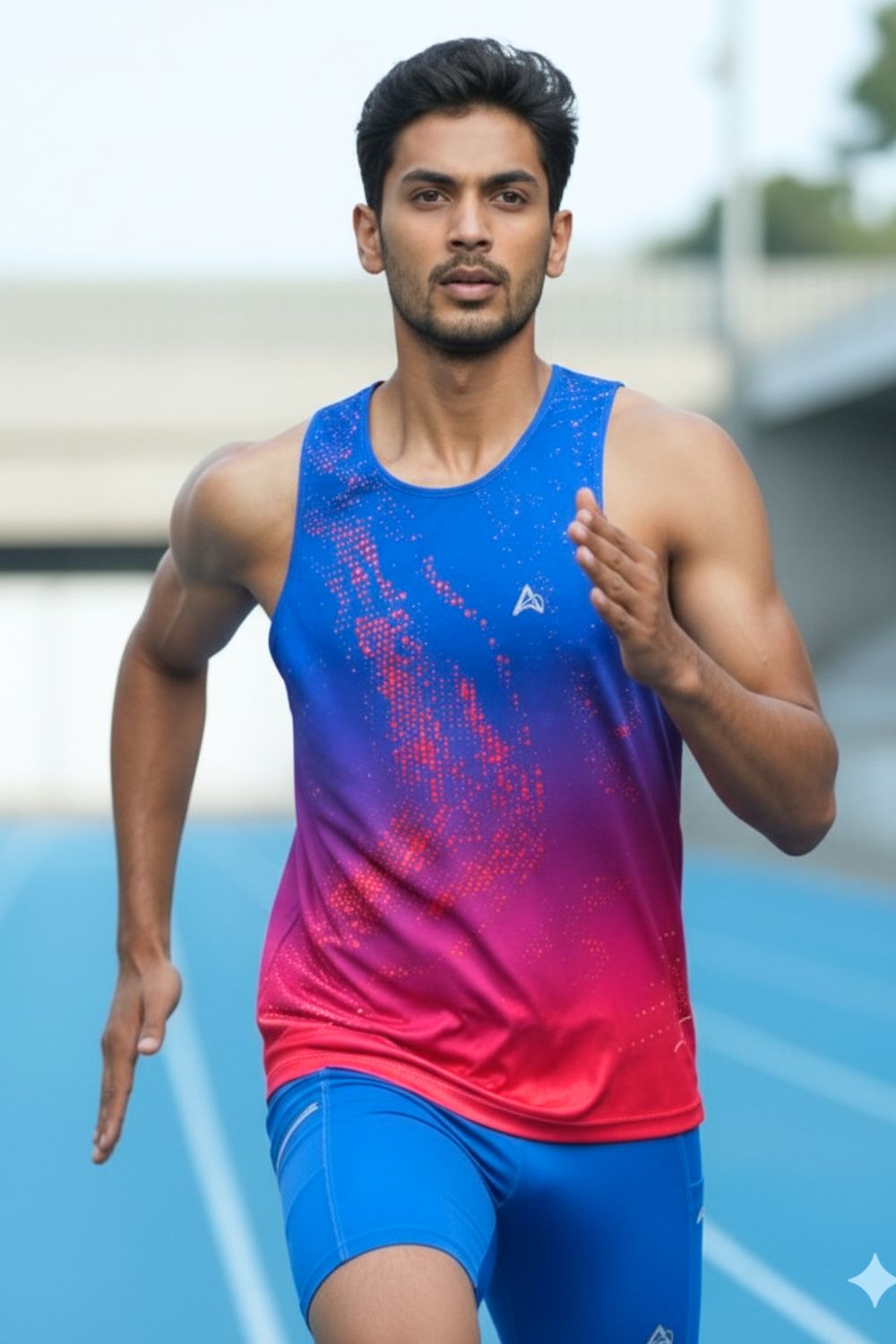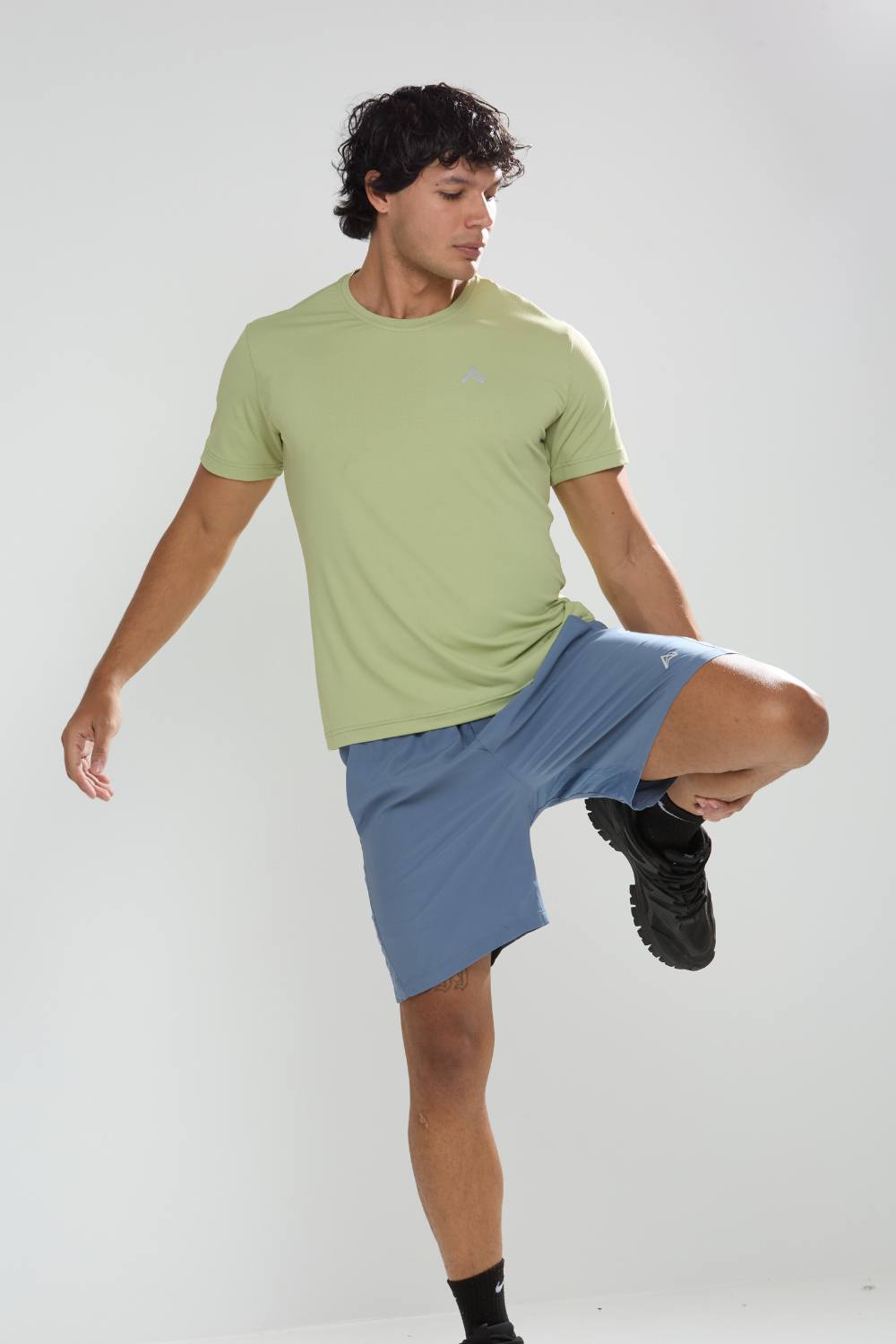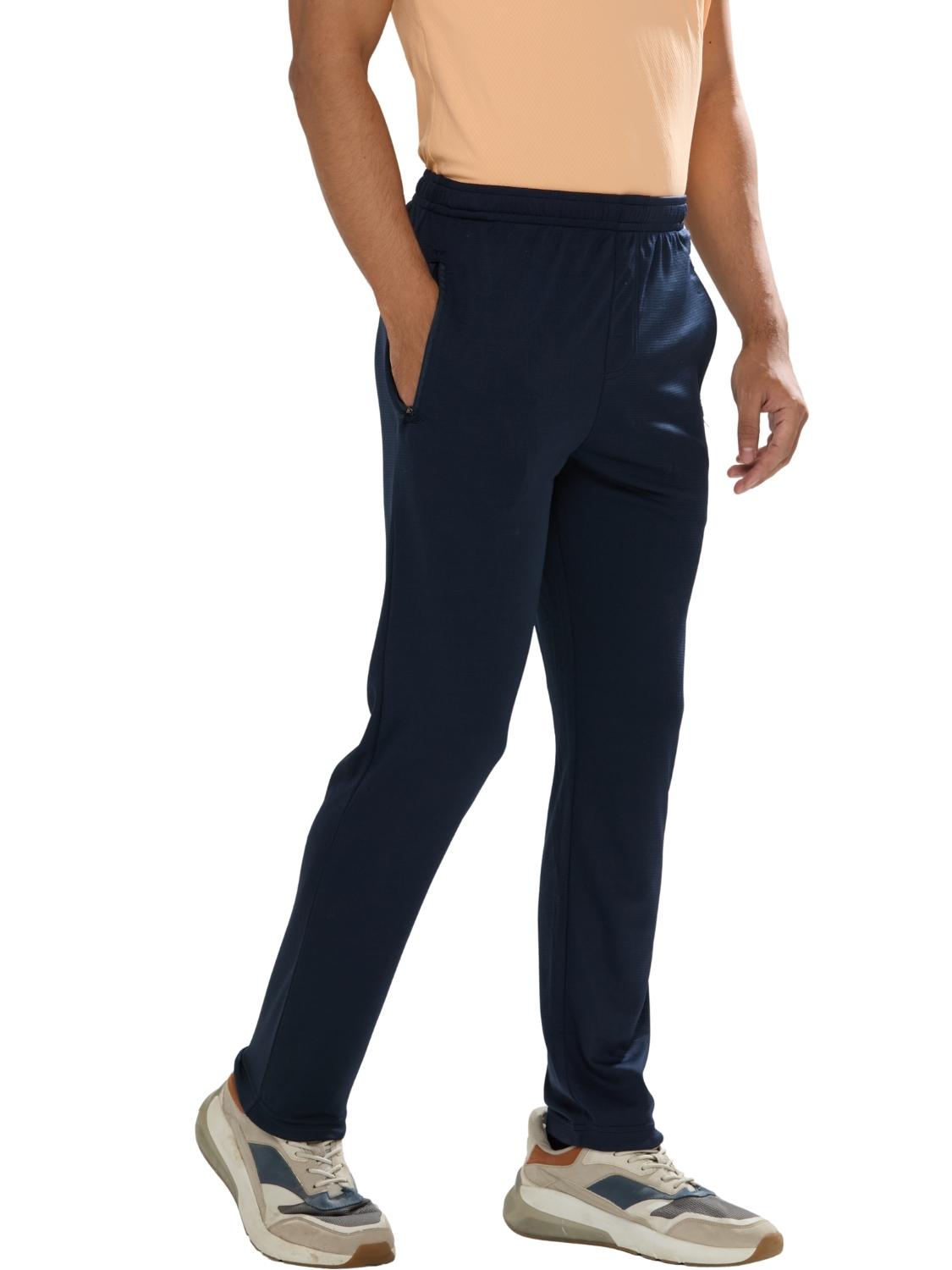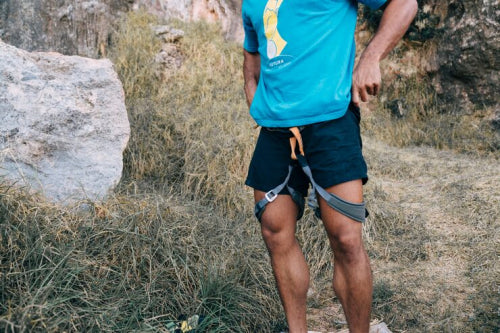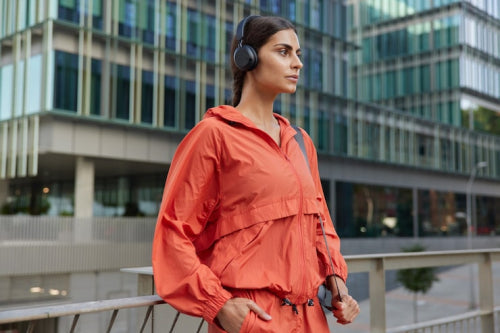Picture this: you're pounding the pavement at sunrise in Mumbai's humid embrace, dodging uneven sidewalks while your gear effortlessly pulls moisture away, keeps your essentials secure, and adapts seamlessly to the unpredictable Indian landscape. This isn't some imported luxury it's locally engineered performance wear that's challenging the notion that excellence must carry an exorbitant cost. In bustling metropolises like Bangalore, Hyderabad, and Delhi, a new wave of runners is embracing this change, seeking equipment that delivers superior value without the premium penalty. It's a movement that's reshaping how we view quality in sportswear, proving that smart design can bridge the gap between aspiration and accessibility.
Tired of gear that slows you down? Chafing, soggy fabrics, and missing pockets kill your run's momentum. At Aguante, we're runners who get it. Our high-performance activewear features moisture-wicking fabrics, ergonomic designs, and smart storage to keep you focused. Shop Now!
Rethinking Premium in Sportswear
The surge in activewear adoption across India's vibrant urban landscapes is unmistakable. From Bangalore's innovation-driven neighborhoods to Hyderabad's expanding wellness scenes, individuals are increasingly committing to fitness routines, spurred by heightened health awareness following global disruptions. Supporting this trend, the global activewear market reached a valuation of USD 414.17 billion in 2024, with forecasts indicating growth to USD 672.03 billion by 2033 at a compound annual growth rate of 5.0% from 2025 onward.
North America leads this expansion, propelled by entrenched fitness habits, the athleisure phenomenon, cutting-edge material developments, and robust online retail growth. Yet, in India, the narrative pivots toward inclusivity, ensuring this upward trajectory benefits a broader demographic through thoughtful, region-specific solutions.
For years, multinational corporations have held sway, imposing steep prices on products that often prioritize brand prestige over practical utility. Consider the logos that inflate costs far beyond the embedded technology. However, as athletes in Pune and Navi Mumbai navigate erratic weather patterns, they're scrutinizing whether such premiums justify the expense. This scrutiny underscores a pivotal conversation: Value-Driven Design Shifts Perceptions of Premium Pricing in Sportswear. Is it possible for indigenous ingenuity to match or surpass imported standards without the financial burden? Companies like Aguante affirmatively respond, engineering apparel suited to Indian physiques, climates, and terrains from Surat's dynamic industrial zones to Ahmedabad's historic pathways.
This perspective isn't mere speculation. The worldwide sportswear sector stood at USD 206.64 billion in 2024, anticipated to expand from USD 220.34 billion in 2025 to USD 350.45 billion by 2032, achieving a CAGR of 7.84%.
North America commands a 45.86% market share, supported by urban lifestyle shifts and innovations in fabrics that promote sweat evaporation, airflow, and mobility while mitigating injury risks. In contrast, India's burgeoning urban populace exemplified by Gurugram's professionals mingling with Delhi's recreational joggers fuels a call for unpretentious, high-functioning attire that aligns with everyday realities.
Delving deeper, the premium sportswear arena was valued at USD 98.85 billion globally in 2023, poised to attain USD 174.33 billion by 2030 with an 8.5% CAGR from 2024.
Factors such as escalating health priorities, broader engagement in physical activities, and athleisure's integration into daily wardrobes drive this momentum. North America captured 35.4% of revenues in 2023, but Asia Pacific is accelerating at 9.2% CAGR, reflecting economic advancements and rising disposable incomes among the middle class.
Emerging Trends in the Activewear Market
At the heart of this evolution lies localization. Rather than imposing universal templates from distant shores, forward-thinking brands are customizing for authentic challenges. Aguante exemplifies this by tailoring each item to withstand India's intense heat, pervasive humidity, and varied urban surfaces, prioritizing ventilation and ease to minimize distractions during exertion. This approach diverges sharply from standard offerings, incorporating elements like stable compartments for belongings, friction-resistant interiors, and visibility-enhancing accents ideal for predawn or twilight outings in Mumbai's outlying areas.
Athleisure represents a transformative force, evolving workout clothing into versatile fashion staples that merge utility with aesthetics. This shift broadens appeal, drawing in those who value both trendiness and functionality in their apparel choices. Complementing this, technological progress in textiles encompassing moisture management, thermal control, and odor resistance elevates user experience.
Moreover, the emphasis on eco-conscious practices is gaining traction, with consumers favoring sustainable options crafted from recycled or organic components to lessen environmental footprints.
Digital platforms are igniting further interest. Across Instagram, Facebook, and YouTube, vibrant communities of athletes flourish. Enthusiasts exchange advice on barefoot techniques or triumphant ascents in Hyderabad's elevations, advocating for genuineness over superficial allure. Such dialogues sway emerging generations in Delhi and Gurugram toward valuing efficacy relative to cost, diminishing the allure of mere branding in favor of apparel optimized for local pursuits at reasonable rates.
Sustainability is weaving itself into the fabric of the industry. Trends for highlight biodegradable textiles, water-efficient dyeing processes, and minimal-waste manufacturing, responding to heightened ecological awareness.
Recycled materials are prominent, alongside innovations like smart wearables integrated into garments for biometric tracking, all while prioritizing planetary health.
This aligns perfectly with preferences in locales like Pune, where environmentally attuned buyers seek uncompromising quality in green alternatives.
In North America, the premium sports apparel domain was appraised at USD 25.80 billion in 2024, forecasted to escalate to USD 40.74 billion by 2030 at a 7.97% CAGR.
Growth stems from wellness emphases, fitness proliferation, and fashion-function fusion, with demands for superior, chic items serving dual purposes. Social media, endorsements from public figures, and tech-infused fabrics like intelligent materials for vital monitoring amplify attraction, mirroring global shifts toward integrated, sustainable solutions.
Real-World Examples: Design as a Pricing Equalizer
Aguante stands out as a compelling illustration. Far from haphazard assembly, their lineup undergoes rigorous evaluation by authentic Indian participants, guaranteeing silhouettes that accommodate regional anatomies and withstand metropolitan rigors. Bid farewell to irritation during extended sessions in Surat or material fatigue under Ahmedabad's glare. Pricing remains transparent, eschewing unnecessary escalations typical of international marques. This fusion of domestic expertise with international benchmarks is disseminated through engaging Instagram narratives, Facebook collectives, and YouTube showcases that cultivate enthusiasm.
In juxtaposition, established entities often conceive overseas and levy elevated fees, whereas Aguante concentrates on essentials: hydration-dispersing mechanisms, interruption-free attributes, and evolutions derived from insights. Collaborations with influencers magnify reach coaches on Instagram demonstrate resilience in actual scenarios, spanning Bangalore's endurance events to Mumbai's coastal trails. Such endorsements convert doubters into advocates, underscoring communal endorsement's power.
Market channels enhance availability. With items surfacing in social streams, procurement simplifies. Participants in Navi Mumbai can browse, view demonstrations on YouTube, and acquire competitive performance attire minus fiscal strain. This trend democratizes access, reflecting a broader shift toward e-commerce, which is increasingly becoming a primary channel for sportswear transactions across major markets, including the U.S. and Europe.
Furthermore, female involvement bolsters expansion, with 41% representation in the 2018 Winter Olympics and over 6 billion U.S. gym visits in 2018, highlighting inclusive appeal.
Challenges: Breaking the Premium Perception Barrier
Entrenched beliefs persist. Numerous consumers equate elevated costs with superior craftsmanship, posing obstacles for value-oriented entrants. In overcrowded arenas, behemoths eclipse specialized offerings, their promotions saturating Delhi's vistas while newcomers vie for attention.
Confidence concerns endure. Patrons apprehension that modest pricing implies concessions in longevity or aesthetics, particularly in budding areas like Surat. Expansion demands vigilance upholding uniformity amid Hyderabad's burgeoning needs sans price hikes proves demanding.
Nevertheless, fissures appear in these impediments. With fitness applications and city gymnasiums proliferating a 50% uptick in app utilization during 2020's initial months buyers grow discerning, insisting on evidence beyond assertions.
Globally, downloads surged 46% in 2020, with India witnessing a 156% rise, underscoring digital's role in habit formation.Surveys reveal 74% of Americans engaged at least one fitness app amid quarantines, with 60% favoring domestic exercises.
Opportunities: Redefining Affordability in Activewear
Transparent costing distinguishes itself. Amid overpriced alternatives, it nurtures fidelity, transforming occasional purchasers in Pune into steadfast supporters. Grassroots promotion excels niche opinion leaders and locale-based groups in Gurugram or Ahmedabad standardize exceptional output at equitable terms.
Eco-initiatives amplify allure. Overt, indigenous production captivates sustainability-focused enthusiasts in Bangalore, fortifying reliability. Virtual amenities such as protected transactions and hassle-free exchanges dispel reservations, rendering value propositions irresistible.
Prospectively, electronic commerce's ascent swiftest in North America's upscale category, with online projected at 9.4% CAGR through 2030 foreshadows India's prospects.
As digital revenues climb, enterprises can transcend urban confines, reconceptualizing attainable luxury universally. Innovations like rental schemes, 3D fabrication, and cross-sector alliances further invigorate the landscape.
Future Outlook for Value-Driven Sportswear
Domestic sportspeople articulate priorities unequivocally: efficacy, adaptation, and practicality eclipse nomenclature. Entities should intensify commitments to participant-validated advancements, calibrated to indigenous exigencies. Articulating worth lucidly via metrics, anecdotes, and societal validations will invert viewpoints.
Fostering assurance through candor perpetuates advancement, from Mumbai's throngs to Surat's novices. Ultimately, value-centric methodology doesn't diminish luxury it amplifies benchmarks, affirming superior equipment's universality beyond elitism. Amid enlarging sectors and proliferating participants, this paradigm could eclipse traditionalists, step by step.
Frequently Asked Questions
How is value-driven design changing premium sportswear pricing perceptions?
Value-driven design is challenging the traditional belief that high prices automatically equal superior quality in sportswear. Companies like Aguante are proving that locally engineered performance wear can match or exceed international standards without the premium penalty, focusing on practical functionality over brand prestige. This approach prioritizes features like moisture-wicking technology, durability, and climate-specific adaptations while maintaining transparent, accessible pricing that democratizes access to quality athletic wear.
What makes Indian activewear brands competitive against international sportswear giants?
Indian activewear brands gain competitive advantage through localization and understanding of regional needs, designing products specifically for Indian physiques, climates, and terrains. Unlike international brands that often impose universal templates with elevated pricing, domestic brands like Aguante focus on essentials such as ventilation systems, secure storage compartments, and materials that withstand India's intense heat and humidity. This targeted approach, combined with transparent pricing and authentic user testing, delivers superior value without the financial burden of imported luxury brands.
Why is the activewear market shifting toward affordable premium alternatives?
The activewear market is experiencing a fundamental shift as consumers become more discerning about value versus cost, particularly in India's growing urban markets. With the global activewear market projected to reach $672.03 billion by 2033 and Asia Pacific showing 9.2% CAGR growth, buyers are increasingly demanding proof of performance over brand assertions. Digital platforms and social media have empowered consumers to research and compare products, leading them to favor functionality, sustainability, and cost-effectiveness over traditional premium branding, ultimately redefining what constitutes true luxury in sportswear.
Disclaimer: The above helpful resources content contains personal opinions and experiences. The information provided is for general knowledge and does not constitute professional advice.
You may also be interested in: Why Indian Marathoners Choose Aguante for Long Runs
Tired of gear that slows you down? Chafing, soggy fabrics, and missing pockets kill your run's momentum. At Aguante, we're runners who get it. Our high-performance activewear features moisture-wicking fabrics, ergonomic designs, and smart storage to keep you focused. Shop Now!
Powered by flareAI.co





